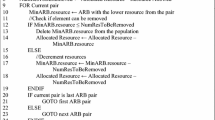Abstract
Diabetes mellitus (DM) is a disease prevalent in population and is not easily perceived in its initial stage but may sway a patient very seriously in later stage. In accordance with the estimation of World Health Organization (WHO), there will be 370 million diabetics which are 5.4% of the global people in 2030, so it becomes more and more important to predict whether a pregnant woman has or is likely to acquire diabetes. This study is conducted with the use of the machine learning—Artificial Immune Recognition System (AIRS)—to assist doctors in predicting pregnant women who have premonition of type 2 diabetes. AIRS is proposed by Andrew Watkins in 2001 and it makes use of the metaphor of the vertebrate immune system to recognize antigens, select clone, and memorize cells. Additionally, AIRS includes a mechanism, limited resource, to restrain the number of memory cells from increasing uncontrollably. It has also showed positive results on problems in which it was applied. The objective of this study is to investigate the feasibility in using AIRS to predict gestational diabetes mellitus (GDM) subsequent DM. The dataset of diabetes has imbalanced data, but the overall classification recall could still reach 62.8%, which is better than the traditional method, logistic regression, and the technique which is thought as one of the powerful classification approaches, support vector machines (SVM).

Similar content being viewed by others
References
Madhavan, A., Beena, K. R., and Sanal, M. G., A pilot study on the usefulness of body mass index and waist hip ratio as a predictive tool for gestational diabetes in Asian Indians. Gynecol. Endocrinol. 24:701–707, 2008.
Seshiah, V., Balaji, V., Balaji, M. S., Panneerselvam, A., Thamizharasi, M., and Arthi, T., Glycemic level at the first visit and prediction of GDM. J. Assoc. Phys. India. 55:630–632, 2007.
Akinci, B., Celtik, A., Yener, S., and Yesil, S., Is fasting glucose level during oral glucose tolerance test an indicator of the insulin need in gestational diabetes? Diabetes Res. Clin. Pract. 82(2):219–225, 2008.
Campos, M. A. A., Reichelt, A. A. J., Façanha, C., Forti, A. C., and Schmidt, M. I., Evaluation of a 1-h 75-g oral glucose tolerance test in the diagnosis of gestational diabetes. Braz. J. Med. Biol. Res. 41(8):684–688, 2008.
Cheung, N. W., and Helmink, D., Gestational diabetes: the significance of persistent fasting hyperglycemia for the subsequent development of diabetes mellitus. J. Diabetes Its Complicat. 20(1):21–25, 2006.
Lee, A. J., Hiscock, R. J., Wein, P., Walker, S. P., and Permezel, M., Gestational diabetes mellitus: clinical predictors and long-term risk of developing type 2 diabetes: a retrospective cohort study using survival analysis. Diabetes Care. 30(4):878–883, 2007.
Cho, N. H., Lim, S., Jang, H. C., Park, H. K., and Metzger, B. E., Elevated homocysteine as a risk factor for the development of diabetes in women with a previous history of gestational diabetes mellitus: a 4-year prospective study. Diabetes Care. 28(11):2750–2755, 2005.
Carr, D. B., Newton, K. M., Utzschneider, K. M., Tong, J., Gerchman, F., Kahn, S. E., and Heckbert, S. R., Modestly elevated glucose levels during pregnancy are associated with a higher risk of future diabetes among women without gestational diabetes mellitus. Diabetes Care. 31(5):1037–1039, 2008.
Smirnakis, K. V., Chasan-Taber, L., Wolf, M., Markenson, G., Ecker, J. L., and Thadhani, R., Postpartum diabetes screening in women with a history of gestational diabetes. Obstet. Gynecol. 106(6):1297–1303, 2005.
Watkins, A. B. AIRS: A resource limited artificial immune classifier. Master thesis, Mississippi State University, 2001.
Polat, K., Güneş, S., and Tosun, S., Diagnosis of heart disease using artificial immune recognition system and fuzzy weighted pre-processing. Pattern Recogn. 39(11):2186–2193, 2006.
Polat, K., Yosunkaya, Ş., and Güneş, S., Comparison of different classifier algorithms on the automated detection of obstructive sleep apnea syndrome. J. Med. Syst. 32(3):243–250, 2008.
Polat, K., Yosunkaya, Ş., and Güneş, S., A new approach to diagnosing of importance degree of obstructive sleep apnea syndrome: pairwise AIRS and fuzzy-AIRS classifiers. J. Med. Syst. 32(6):489–497, 2008.
Polat, K., and Güneş, S., Principles component analysis, fuzzy weighting pre-processing and artificial immune recognition system based diagnostic system for diagnosis of lung cancer. Expert Syst. Appl. 34(1):214–221, 2008.
Nasaroui, O. F., Gonzalez, F., and Dasgupta, D., The fuzzy artificial immune system: motivation, basic concepts, and application to clustering and web profiling. International Joint Conference on Fuzzy Systems, pp. 711–717, 2002.
Şahan, S., Kodaz, H., Güneş, S., and Polat, K., A new classifier based on attribute weighted artificial immune system. Lect. Notes Comput. Sci. 3280:11–20, 2004.
Goodman, D. E. Jr., Boggess, L. C., and Watkins, A. B., Artificial immune system classification of multiple-class problems. The Proceeding of the Artificial Neural Networks in Engineering, pp. 179–183, 2002.
Celebi, M. E., Kingravi, H. A., Uddin, B., Iyatomi, H., Aslandogan, Y. A., Stoecker, W. V., and Moss, R. H., A methodological approach to the classification of dermoscopy images. Comput. Med. Imaging Graph. 31(6):362–373, 2007.
Wu, G., and Chang, E. Y., KBA: kernel boundary alignment considering imbalanced data distribution. IEEE Trans. Knowl. Data Eng. 17(6):786–794, 2005.
Batuwita, R., and Palade, V., MicroPred: effective classification on pre-miRNAs for human miRNA gene prediction. Bioinformatics. 25(8):989–995, 2009.
Tang, Y., and Chawla, N. V., SVMs modeling for highly imbalanced classification. IEEE Trans. Syst. Man Cybern. Part B: Cybern. 39(1):281–288, 2009.
Kubat, M., and Matwin, S., Addressing the curse of imbalanced training set: one-sided selection. Proceeding 14th International Conference on Machine Learning (ICML’97) 179–186, 1997.
Chang, C. C., Lin, C. J. LIBSVM: a library for support vector machines, 2001. Software available at http://www.csie.ntu.edu.tw/∼cjlin/libsvm
Hsu, C. W., and Lin, C. J., A comparison of methods for multiclass support vector machines. IEEE Trans. Neural Netw. 12(2):415–425, 2002.
Acknowledgement
This work was supported in part by the National Science Council, Taiwan, under grant NSC-98-2221-E-007-071-MY3.
Author information
Authors and Affiliations
Corresponding author
Rights and permissions
About this article
Cite this article
Lin, HC., Su, CT. & Wang, PC. An Application of Artificial Immune Recognition System for Prediction of Diabetes Following Gestational Diabetes. J Med Syst 35, 283–289 (2011). https://doi.org/10.1007/s10916-009-9364-8
Received:
Accepted:
Published:
Issue Date:
DOI: https://doi.org/10.1007/s10916-009-9364-8




